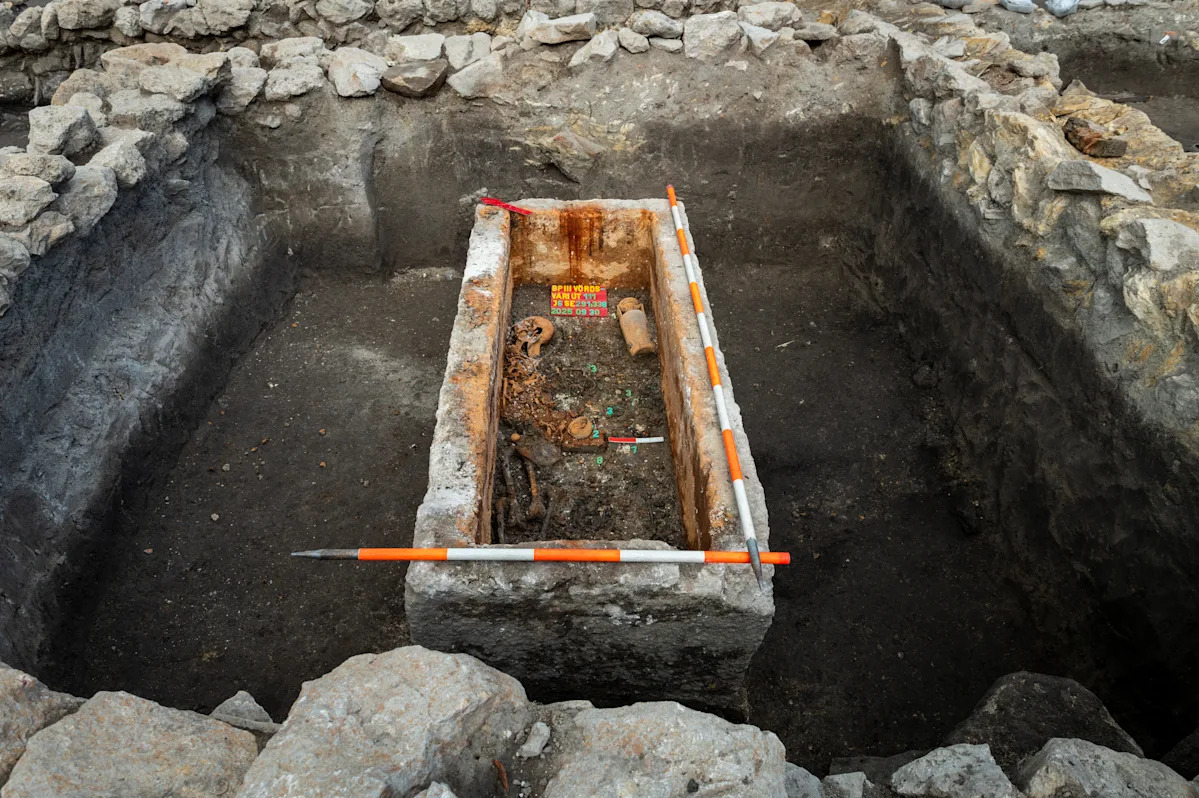BUDAPEST, Hungary (AP) — A remarkably well-preserved Roman sarcophagus has been excavated in Hungary's capital, offering a rare window into the life of a young woman inside and into the world she lived in some 1,700 years ago.
Archaeologists at the Budapest History Museum discovered the limestone coffin during a major excavation in Óbuda, a northern district of the city that was once part of Aquincum, a bustling Roman settlement on the Danube border.
Untouched by robbers and sealed for centuries, the sarcophagus was found with its stone lid held in place by metal clamps and molten lead. When researchers carefully lifted the lid, they discovered a complete skeleton surrounded by dozens of artifacts.
“The peculiarity of the find is that it was a hermetically sealed sarcophagus. It had not been touched before, so it remained intact,” said Gabriella Fenyes, the lead archaeologist at the excavation.
The coffin lay among the ruins of abandoned houses in the Aquincum quarter, liberated in the 3rd century and later converted into a burial ground. Nearby, researchers discovered a Roman aqueduct and eight simpler tombs, but none approached the richness and pristine condition of the sealed tomb.
In accordance with Roman funerary customs, the sarcophagus contained many items: two completely intact glass vessels, bronze figurines and 140 coins. A bone hair clip, amber jewelry and traces of gold embroidered cloth, as well as the size of the skeleton, indicate the grave belonged to a young woman.
These items, Fenyes said, were “items given to the deceased by her relatives for her eternal journey.”
“The deceased was buried very carefully by her relatives. They must have loved whoever was buried here very much,” she said.
During the Roman period, most of what is now Hungary formed the province of Pannonia, the border of which was on the right bank of the Danube River less than a mile (1.6 km) away. There was a legionary camp nearby that guarded the empire's border, and the newly discovered structures are believed to have been part of the civilian settlement that grew up around it.
Anthropologists are now examining the remains of a young woman. The process is expected to reveal more about her age, health and background. But even now, the location of the grave and the abundance of artifacts provide compelling clues.
The sarcophagus and its contents “definitely make it stand out,” said Gergely Kostial, an expert on the Roman period and one of the project leaders. “This likely means that the deceased was a wealthy person or had a higher social status.”
“It is truly rare to find a sarcophagus like this intact and never used before because it was common in the fourth century to reuse earlier sarcophagi,” he added. “It is quite obvious that this sarcophagus was made especially for the deceased.”
Excavators also removed about 4 centimeters (1.5 inches) of dirt from inside the coffin, which Fenyes hopes could contain more treasure.
“I suspect we might find jewelry. We didn't find any earrings or other jewelry that belonged to the woman, so I'm hoping those small items will come up as we sift through the dirt,” she said.
For Fenyes, the discovery of the Roman sarcophagus has not only scientific significance, but also an emotionally resonant understanding of the devotion shown by people in ancient times.
“I was very touched by the care and outpouring of love that we were able to see,” she said. “Even now I shudder to think how painful it was for the people of that time to bury this young woman.”







